Pesach/Passover: Show us your Haggadah!
To celebrate Passover, we asked the organisations in our Hidden Treasures network to send us a favourite Haggadah from their collections.
A Haggadah sets out the order of the Passover seder and is read during the meal which means you will often find wine stains or matzah crumbs among the pages.
The Haggadah is the most widely published Jewish book with a vast array of different themes from ancient texts to modern interpretations, as the ones from our network show.
Here are six of our Hidden Treasures favourites:
1944 Souvenir of a military Passover – AJEX: The Jewish Military Association


Fiona Palmer, Chief Executive at AJEX: the Jewish Military Association sent this souvenir from the Eighth Army Passover seder on Friday 7th April, 1944.
She also sent a quote from Corporal Ron Goldstein of The Hussars, “We settled in around the Cassino area and I remember attending a Passover service organised by a South

Copyright: AJEX Archive
African unit. The marquee that had been set up had been decorated with a huge Magen David made out of camouflage material called ‘scrim’ and I felt that most of those praying that evening gave an extra fervour to their devotions knowing that after the service they were going back into the line.”
A birthday Haggadah from 1936 – Scottish Jewish Archives Centre
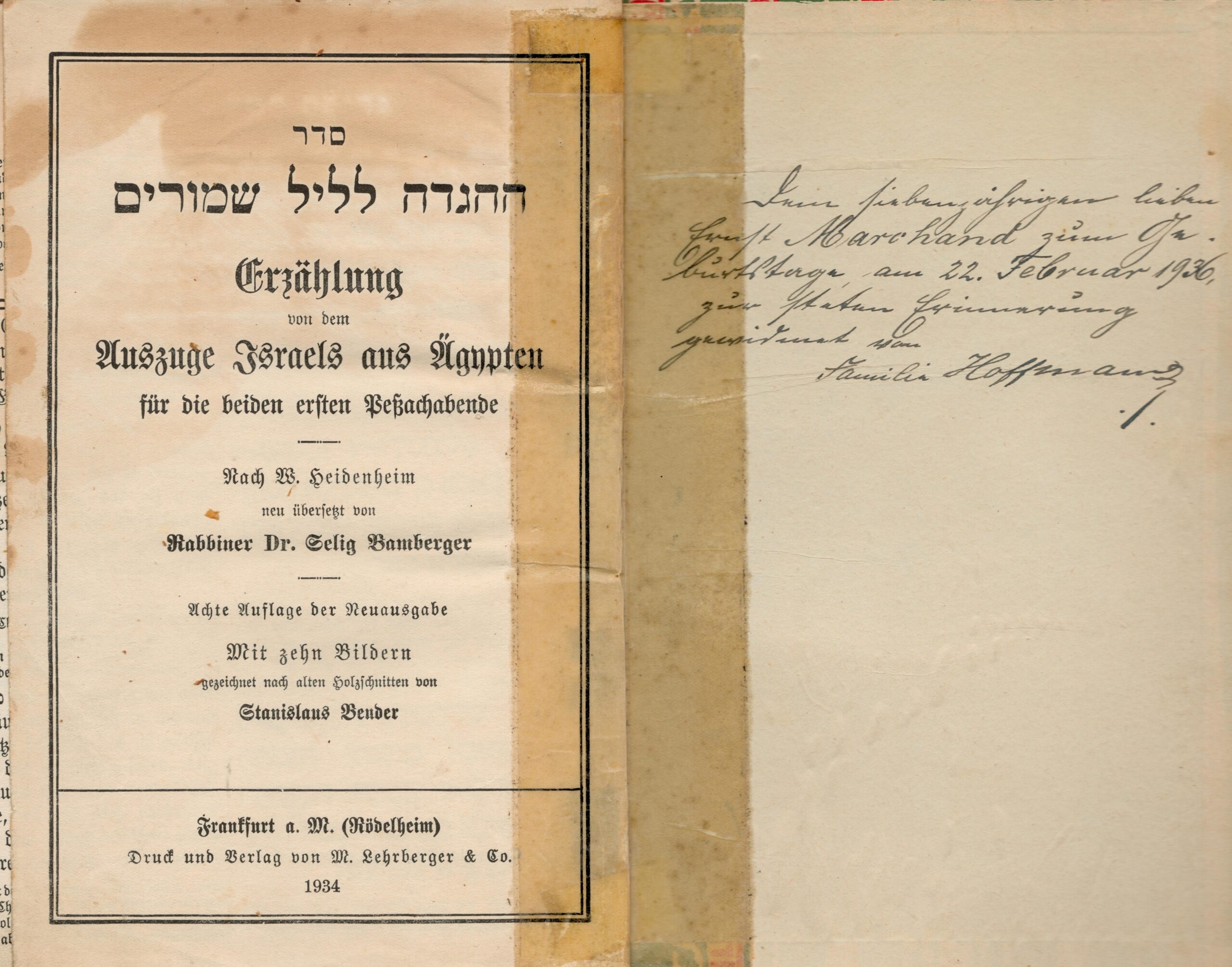
PER/Marchand/0002/20) - part of the Irene and Ernst Marchand Collection (Copyright: Scottish Jewish Archives Centre – not to be reproduced without permission)

This Haggadah was published in Frankfurt am Main in 1934 was chosen by Harvey Kaplan, Director & Chairman at the Scottish Jewish Archives Centre. It was a birthday present in 1936 for 7 year old Ernst Marchand who lived in Gelsenkirchen in Germany. In 1939, Ernst was brought to Glasgow by his widowed mother, Irene Marchand, who came to Scotland on a domestic service visa. Irene became the matron of the Garnethill Boys’ Hostel in the city, looking after refugee boys from Germany, Austria and Czechoslovakia, including her own son. She also worked for a time as cook in Birkenward hostel in Skelmorlie, Ayrshire. Ernst went on to graduate as an electrical engineer in the University of Glasgow. This is his immigration card:
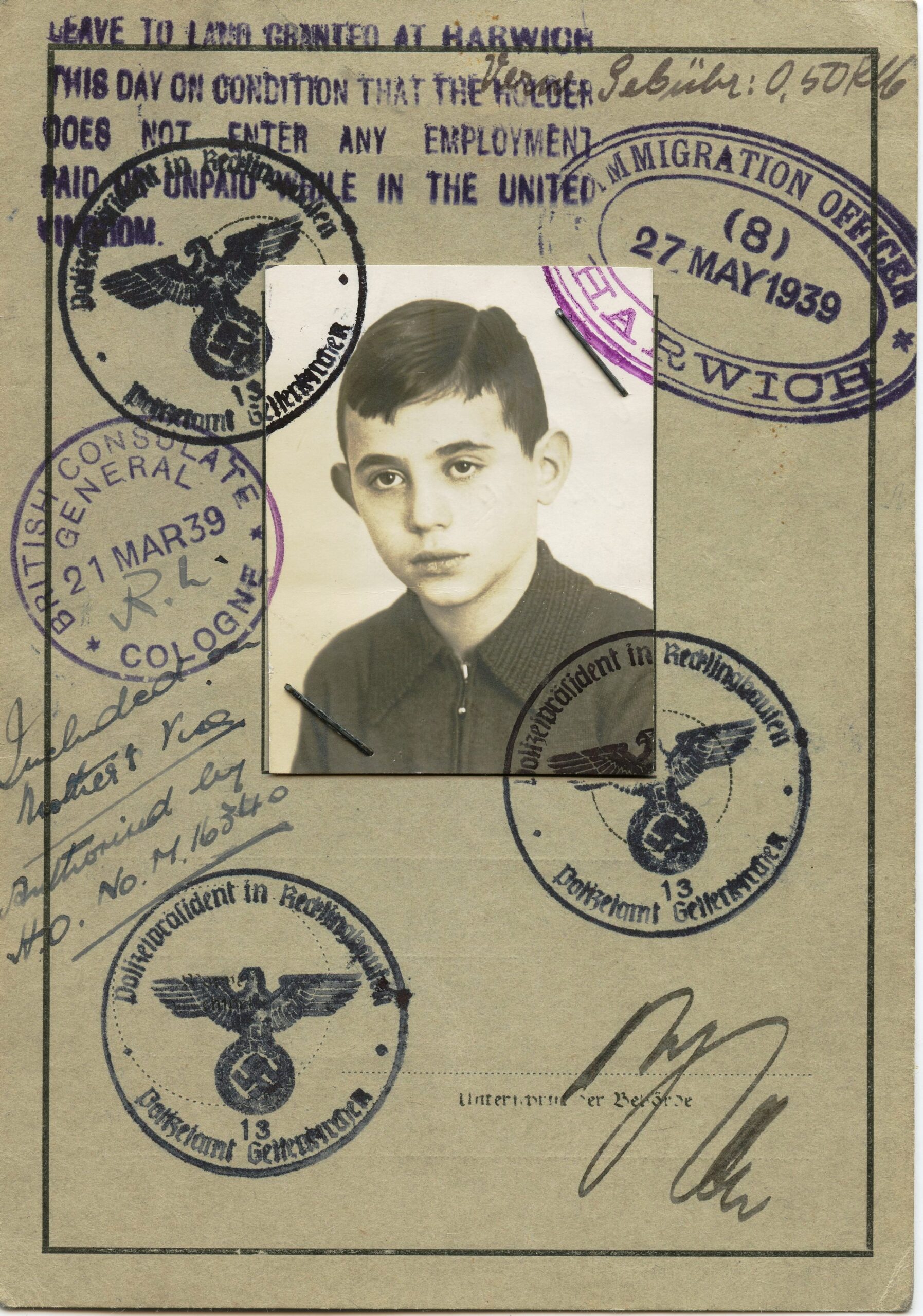
Catalogue: PER/Marchand/0001/116
The Haggadah in Hebrew and English – London School of Jewish Studies
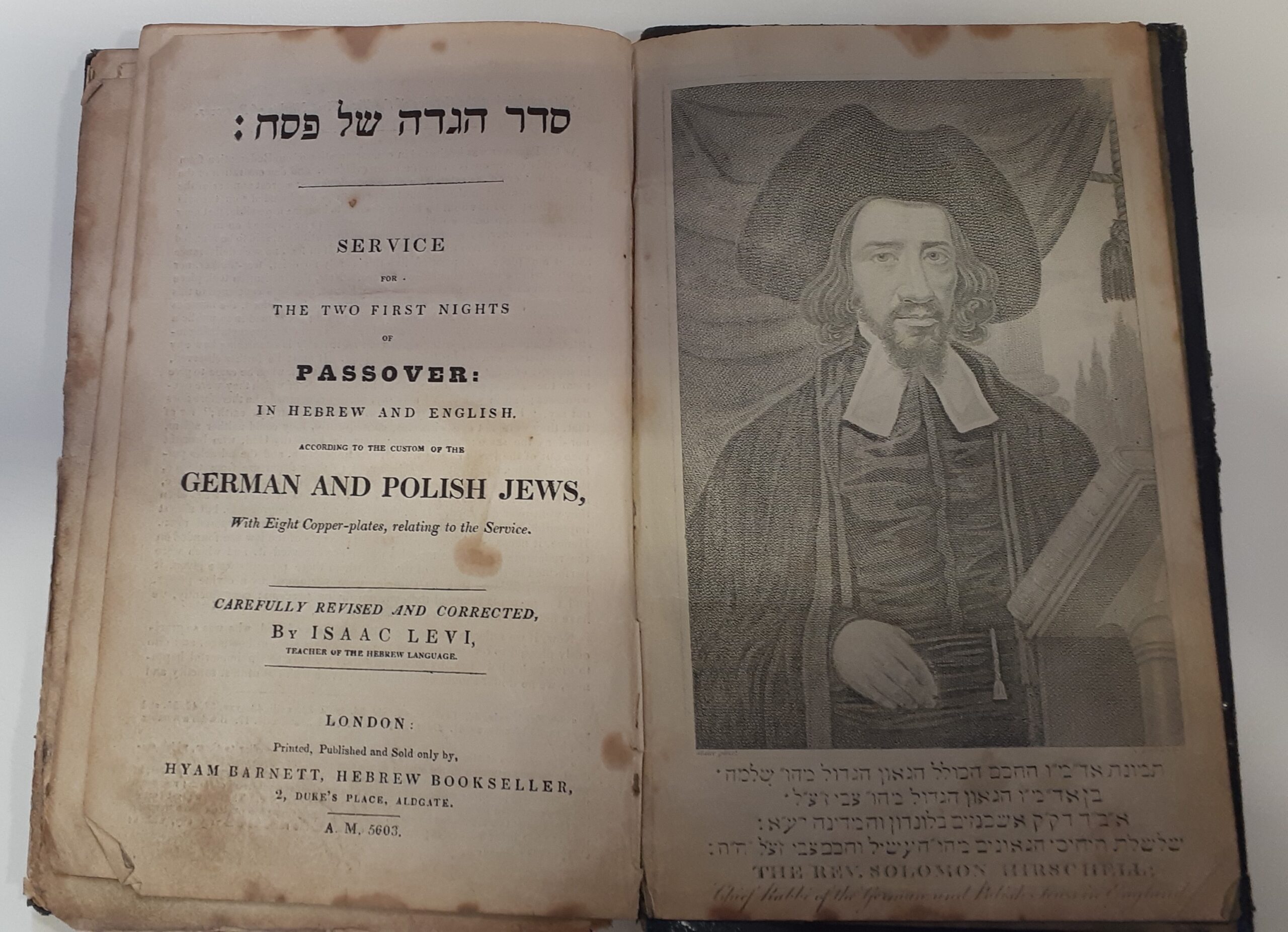
Copyright: London School of Jewish Studies
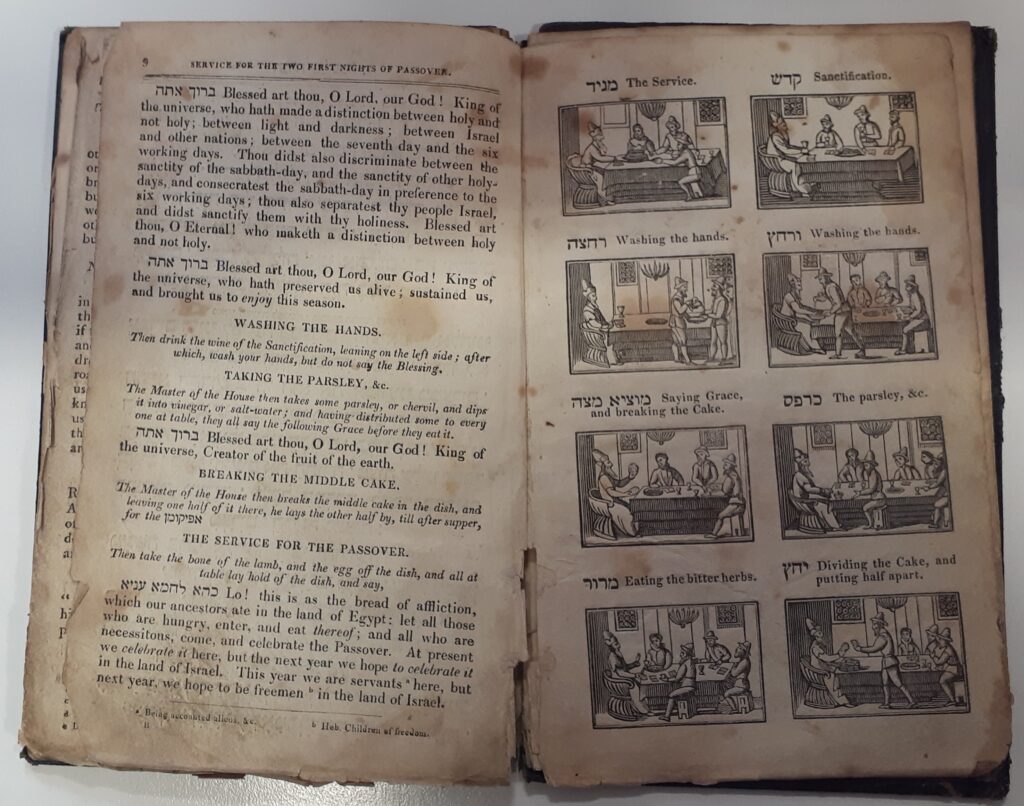
This Haggadah from Samantha Ruben at the London School of Jewish Studies is the ‘Service for the Two First Nights of Passover in Hebrew and according to the custom of the German and Polish Jews’. It was published in 1843 and includes eight copper-plates illustrating the seder.
The unusual portrait engraving on the page preceding the title page is captioned “Picture of our rabbi the complete sage, the great genius Rabbi Shlomo son of the Admor, the great genius, our rabbi Tzvi ZTz”L. Av Beit Din of the holy community of Ashkenazim of London and the state. List of the dynasty of the geniuses Rabbi Heschell and Chacham Tzvi ZTz”L.” The Rev. Solomon Hirschell. Rabbi Hirschell died in 1842, which is not mentioned in this publication.
14th century family Haggadah – UCL Special Collections
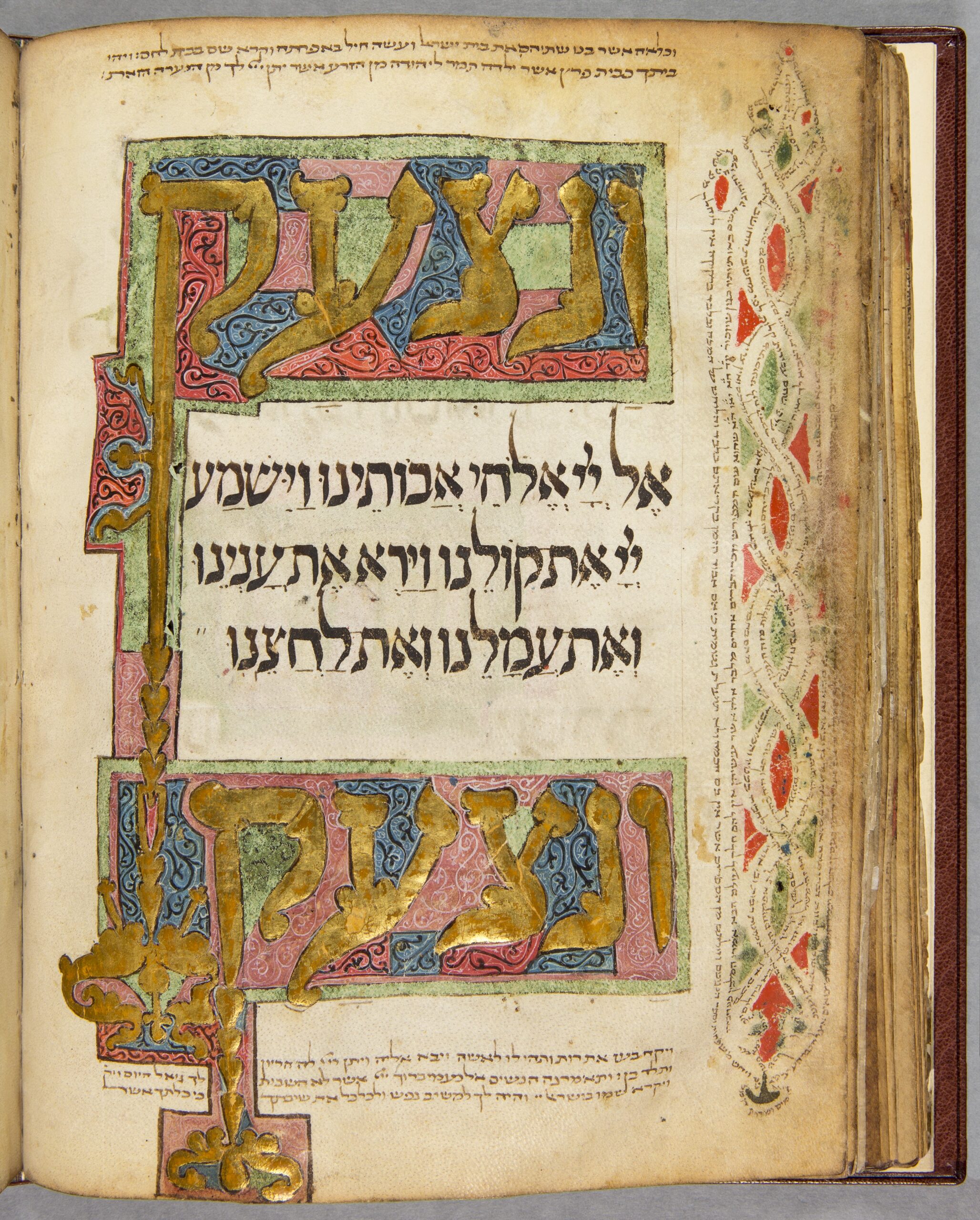
MS MOCATTA 1, UCL Special Collections
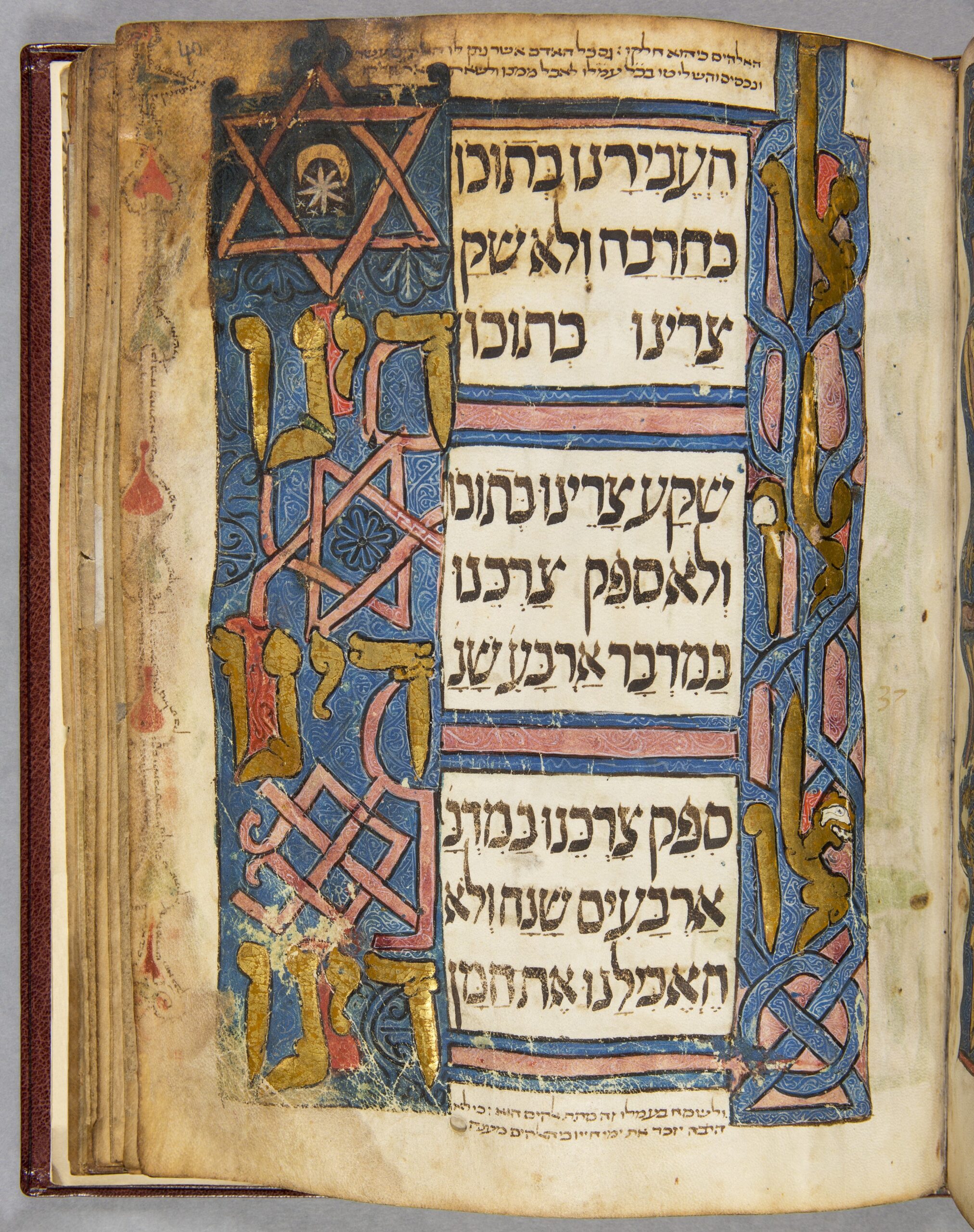

Katy Makin, Archivist at UCL Special Collections shared this 14th century Haggadah with us. It’s part of the F.D. Mocatta library the university acquired in 1906. The family of Frederic David Mocatta can trace its origins back to the 15th century, and one can imagine the Mocatta Haggadah being carefully passed down through the generations. The work dates back to 14th century Spain, a crossover point for Jewish folk art in the stylistic trends of Hebrew book illumination in the country which is why the illustrations in it vary.
A modern Haggadah – London Jewish Museum
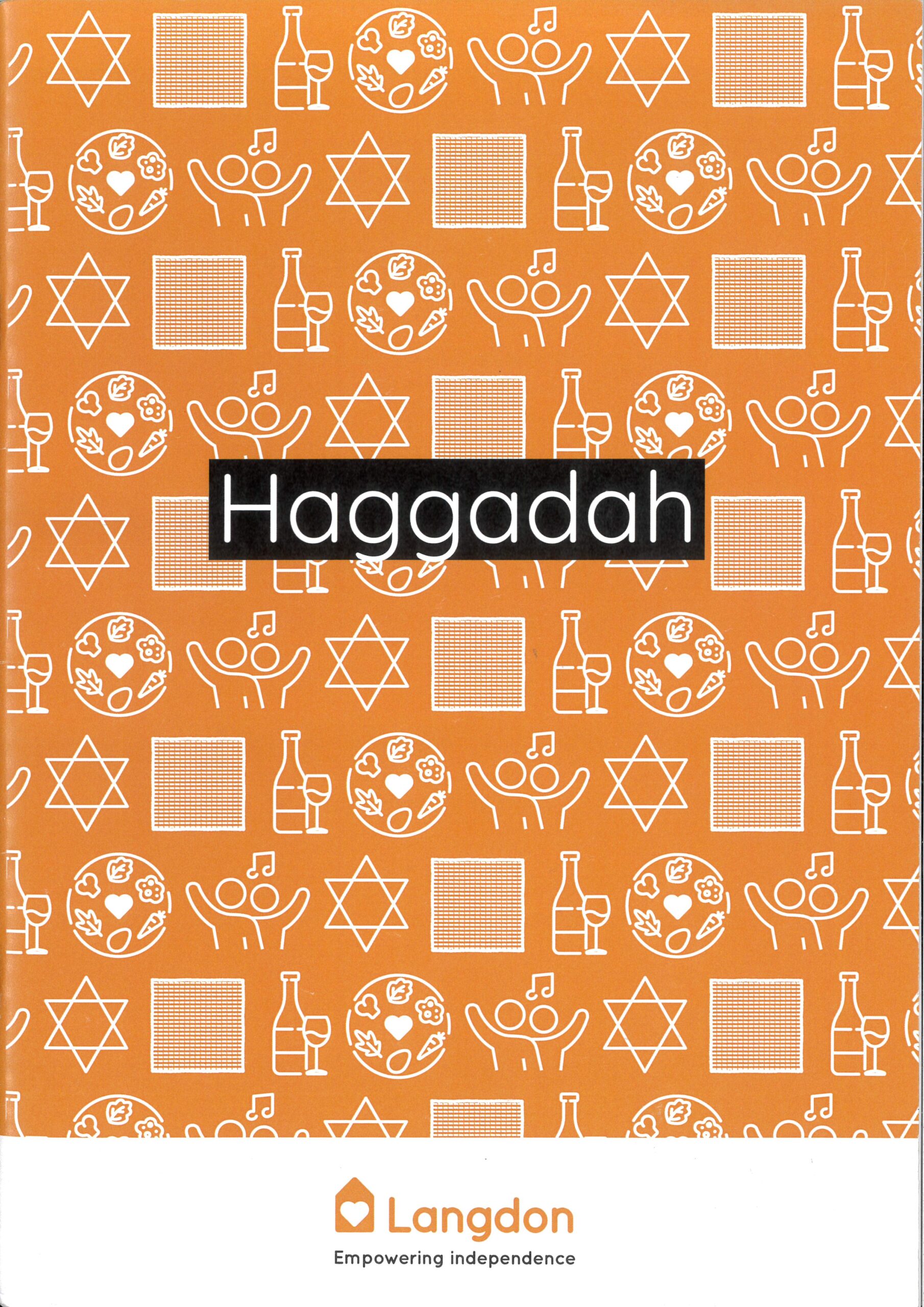
2023.20, London Jewish Museum

Haggadot (p) continue to be published. This one, chosen by Adam Corsini Head of Collections Engagement at Jewish Museum London, was created by Langdon (now part of Kisharon Langdon) a charity specialising in education and care for Jewish children and adults with learning disabilities and autism. This Haggadah for its members was published in 2023 and breaks the seder down into 20 steps for them to follow.
A Haggadah with matzah at its heart – Leo Baeck College Library
In this video Cassy Sacher, Senior Librarian at Leo Baeck College shows us her favourite Haggadah from approximately 300 they have in their library. It’s from the 1990s and is called, ‘Haggadah of the afikomen’. The afikomen is the half of the middle matzah in the seder meal that’s traditionally hidden and then found by the children before being eaten as a dessert.
Watch the video to find out more.